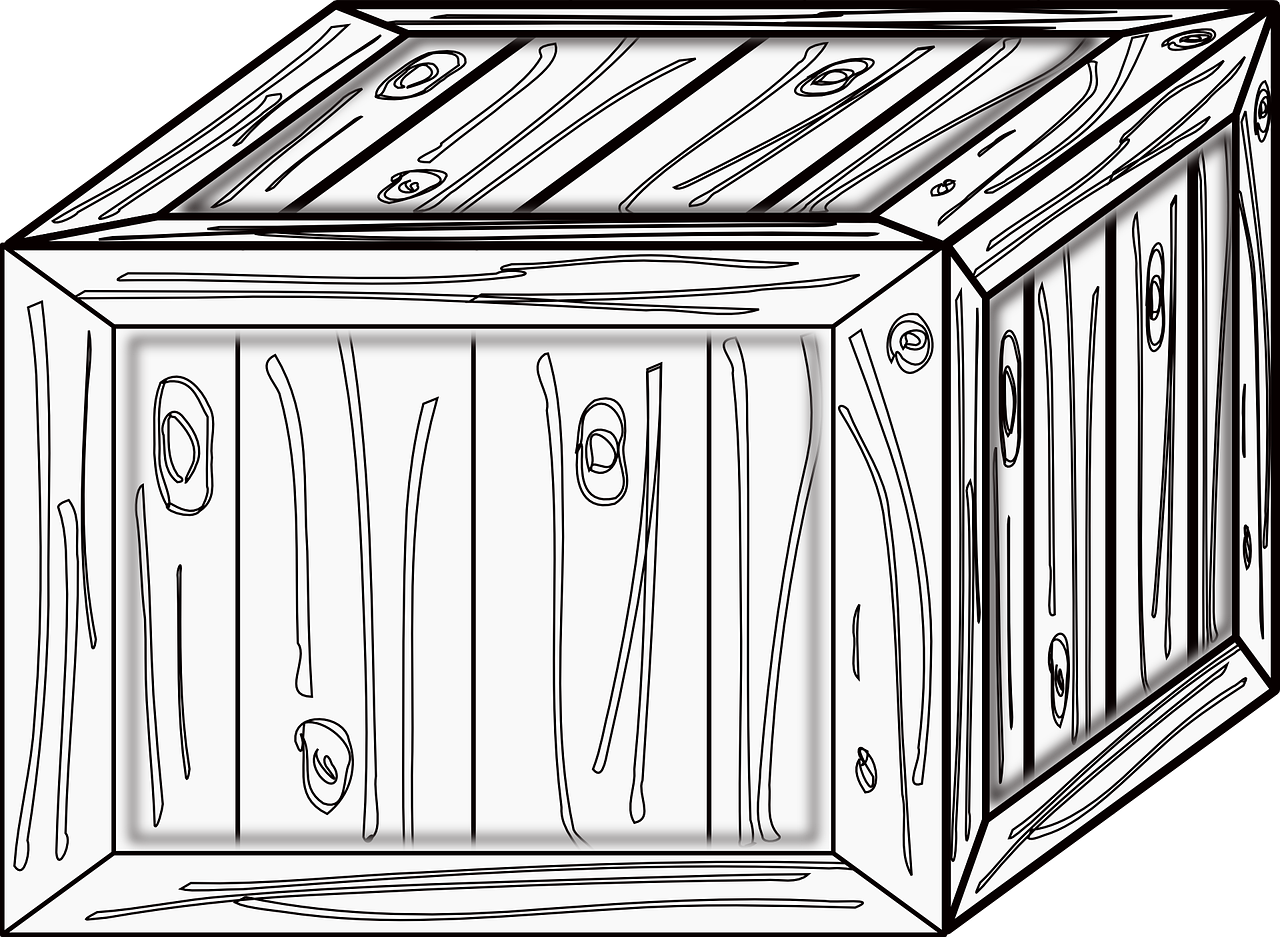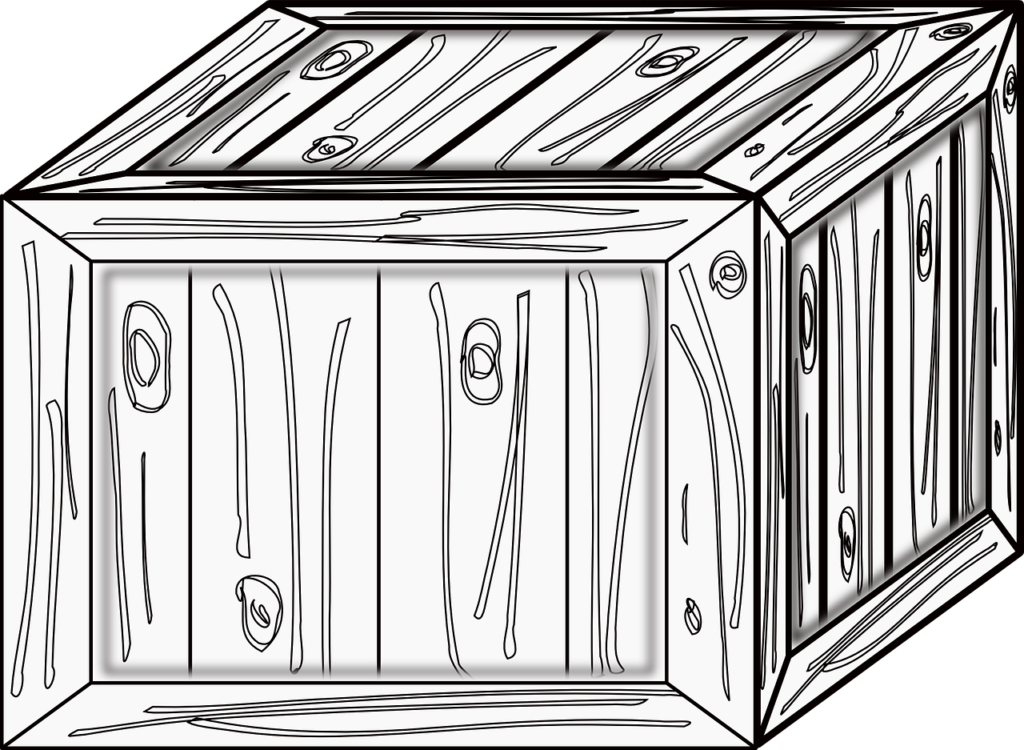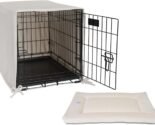
Crate Training Tips to Ease Separation Anxiety
If you’re seeking effective ways to ease separation anxiety in your furry friend, crate training is a solution worth considering. Crate training can provide a safe and secure space where your beloved pet can feel calm and comfortable when you’re away. In this article, we’ll share some valuable tips on crate training that will help alleviate separation anxiety, ensuring a happier and more relaxed pet. So, let’s get started on creating a stress-free environment for your four-legged companion!
Find products like these on Amazon!
Understanding Separation Anxiety
Separation anxiety is a common condition that affects many dogs when they are separated from their owners or primary caregivers. It is characterized by extreme distress and anxiety when left alone, and it can manifest in various behavioral and emotional signs. Understanding the root causes and recognizing the signs and symptoms of separation anxiety in dogs are essential steps towards helping your furry friend overcome this challenging condition.
Definition of Separation Anxiety
Separation anxiety refers to the emotional distress experienced by a dog when separated from their owner or primary caregiver. It is not simply a case of mild discomfort or loneliness; separation anxiety can cause severe panic and fear, leading to destructive behavior and other negative reactions. Dogs with separation anxiety often perceive their owner’s departure as a permanent separation, causing them significant distress.
Causes of Separation Anxiety in Dogs
Separation anxiety can have various causes, and understanding these factors can help in addressing the condition effectively. Some common causes of separation anxiety in dogs include:
- Early life experiences: Dogs that have experienced sudden separation from their mother or littermates at an early age may be more prone to developing separation anxiety.
- Change in routine: Significant changes in the dog’s daily routine, such as a new job schedule for the owner or a move to a new house, can trigger separation anxiety.
- Traumatic events: Experiencing traumatic events, such as being abandoned or neglected in the past, can contribute to separation anxiety.
- Overdependence: Dogs that are overly reliant on their owners and have not been adequately exposed to independent activities may be more susceptible to separation anxiety.
- Lack of socialization: Poor socialization during puppyhood can lead to separation anxiety, as dogs may struggle to cope with being alone.
Signs and Symptoms of Separation Anxiety
Recognizing the signs and symptoms of separation anxiety is crucial in diagnosing and addressing the condition. Here are some common signs that your dog may be experiencing separation anxiety:
- Excessive barking or howling shortly after you leave.
- Destructive behavior, such as chewing furniture or scratching doors and windows.
- Pacing or restlessness.
- Attempts to escape or damage the crate or confinement area.
- Inappropriate elimination (urinating or defecating) in the house.
- Excessive drooling or panting.
- Loss of appetite or decreased interest in food.
- Agitation or panic as you prepare to leave.
If you observe these signs consistently when you leave your dog alone, it is highly likely that they are suffering from separation anxiety. Now that we have a better understanding of separation anxiety, let’s explore how crate training can be a beneficial tool in managing this condition.
Benefits of Crate Training
Crate training is widely recommended as a valuable tool in managing separation anxiety in dogs. When done correctly, crate training can provide numerous benefits for both you and your canine companion.
Creating a Safe Space
A crate serves as a secure and cozy sanctuary for your dog. Dogs are den animals by nature, and having a designated space that replicates the safety and comfort of a den can help them feel more secure when left alone. The enclosed space of the crate provides a sense of protection and can help alleviate anxiety.
Promoting Independence
Crate training encourages dogs to develop a sense of independence and self-reliance. When properly trained to enjoy spending time in their crate, dogs learn to entertain themselves and become less reliant on constant human attention. This can be especially helpful for dogs with separation anxiety, as they learn to be more self-assured and calm when left alone.
Reducing Destructive Behavior
One of the most common challenges faced by owners of dogs with separation anxiety is destructive behavior. Dogs with separation anxiety may engage in destructive activities, such as chewing furniture or digging through garbage, as a way of coping with their anxiety. Crate training can provide a safe and controlled environment, preventing destructive behavior and keeping your belongings safe.
Facilitating House Training
Crate training can be a valuable tool in house training your dog. Dogs naturally avoid soiling their sleeping areas, so by confining them to a crate, you can encourage them to develop bladder and bowel control. This can be particularly helpful in preventing accidents during periods of separation, as your dog will be less likely to eliminate in their crate.
Easing Anxiety
Perhaps the most significant benefit of crate training for dogs with separation anxiety is the potential to alleviate their anxiety levels. The secure and comforting space of the crate can help dogs feel more at ease and reduce the panic and distress they experience when left alone. Crate training provides a sense of structure and routine, which can be comforting for dogs with separation anxiety.
Now that we understand the benefits of crate training, it’s essential to choose the right crate for your furry friend.

This image is property of pixabay.com.
Find products like these on Amazon!
Choosing the Right Crate
When it comes to crate training, selecting the right crate for your dog is crucial. The crate should be a safe and comfortable space that your dog can enjoy spending time in. Here are some considerations to keep in mind when choosing a crate:
Size and Space Considerations
The size of the crate is one of the most critical factors to consider. The crate should be large enough for your dog to stand up, turn around, and lie down comfortably. However, it should not be excessively spacious, as dogs prefer a den-like environment that provides a sense of security. Choosing the right size crate ensures that your dog feels safe and cozy.
Types of Crates
There are various types of crates available, including wire crates, plastic crates, and soft-sided crates. Each type has its advantages and disadvantages, so it’s important to choose one that suits your dog’s needs. Wire crates provide excellent ventilation and visibility, plastic crates offer a more enclosed and secure feel, while soft-sided crates are lightweight and portable. Consider your dog’s preferences and your specific requirements when selecting a crate.
Features to Look for
When choosing a crate, certain features can enhance the comfort and usability for your dog. Look for crates with a removable tray for easy cleaning and maintenance. Additionally, opt for crates with secure and sturdy latches to prevent your dog from accidentally escaping. Some crates also offer dividers, allowing you to adjust the space as your dog grows. Consider these features to ensure that the crate meets your dog’s comfort and safety needs.
Now that you’ve selected the right crate, let’s dive into the basics of crate training to help your dog develop a positive association with their new space.
Introduction to Crate Training
Crate training is a gradual process that aims to acclimate your dog to their crate, making it a comfortable and familiar space for them. By using positive reinforcement and associating the crate with positive experiences, you can create a positive crate training journey for your dog. Here are some essential steps to introduce your dog to crate training:
Association of Positive Experiences
From the very beginning, it’s crucial to associate the crate with positive experiences. Create a positive and inviting environment around the crate by placing treats, toys, and comfortable bedding inside. You want your dog to view the crate as a desirable place to be, rather than a form of punishment or confinement.
Gradual Introduction to the Crate
Introduce your dog to the crate gradually. Start by leaving the crate door open and allow your dog to explore and investigate at their own pace. Provide encouragement and rewards when they show interest in the crate, but avoid forcing or rushing them. It’s important to make the crate a welcoming space that your dog chooses to enter willingly.
Feeding and Treats in the Crate
One effective way to create a positive association with the crate is to feed your dog their meals inside the crate. Begin by placing their food bowl near the crate and gradually move it closer until you can place the bowl inside the crate. This helps your dog associate the crate with positive experiences and creates a positive association with mealtime.
Using Toys and Comfort Items
Toys and comfort items, such as a favorite blanket or a chew toy, can also help in crate training. Place these items inside the crate to make it a more appealing and comfortable space for your dog. The familiar scent of their toys or the softness of their favorite blanket can provide a sense of security and make the crate a place they enjoy spending time in.
Frequent Short Trips in the Crate
Once your dog feels comfortable entering and staying in the crate, gradually increase the duration of their stay. Start with short periods of time, such as a few minutes, and gradually work your way up to longer durations. During these short stays, offer praise and rewards to reinforce the positive association with the crate. By gradually increasing the time spent in the crate, your dog will become more accustomed to being alone without experiencing anxiety or distress.
Now that your dog is becoming familiar with their crate, it’s important to create a positive environment that enhances their comfort and relaxation.

This image is property of pixabay.com.
Creating a Positive Crate Environment
To maximize your dog’s comfort and enjoyment of the crate, it’s important to create a positive and inviting environment. Here are some ways to ensure that the crate is a cozy and welcoming space for your furry friend:
Comfortable Bedding
Choose soft and comfortable bedding for your dog to lie on inside the crate. A plush bed or a cozy blanket can provide the necessary cushioning and warmth for your dog to relax comfortably. Avoid using materials that can be easily chewed or ingested, as safety is a top priority.
Appropriate Temperature and Lighting
Ensure that the crate is placed in an area with a comfortable temperature and adequate lighting. Avoid placing the crate in direct sunlight or in drafty areas, as extreme temperatures can make your dog uncomfortable. Providing a suitable environment contributes to your dog’s overall well-being and relaxation.
Calming Scents and Music
Consider using calming scents, such as lavender or chamomile, to promote relaxation inside the crate. You can use essential oil diffusers or sprays specifically designed for dogs. Additionally, playing soothing music or using white noise machines can help drown out external noises and create a serene environment for your dog.
Preventing Noise and Distractions
Place the crate in a quiet area of your home to minimize noise and distractions. Dogs, especially those with separation anxiety, can be easily startled or anxious due to external noises or commotion. By placing the crate in a calm and quiet space, you create a peaceful environment that promotes relaxation.
Proper Ventilation
Ensure that the crate has proper ventilation to allow for adequate airflow. Good ventilation helps regulate temperature and prevents the crate from feeling stuffy or claustrophobic. Opt for crates with wire or mesh construction that allow air to circulate freely. Proper ventilation contributes to your dog’s comfort and helps create a pleasant crate environment.
As you establish a positive crate environment, it’s essential to establish a consistent routine for crate training.
Establishing a Crate Training Routine
Consistency is key when it comes to crate training. Establishing a routine and sticking to it can greatly contribute to your dog’s success in crate training. Here are some important aspects to include in your crate training routine:
Consistency is Key
Consistency is crucial throughout the entire crate training process. This includes using the crate consistently, feeding meals at the same times, and implementing a regular exercise routine. Dogs thrive on predictability, so maintaining a consistent routine helps them feel secure and comfortable.
Gradual Increase in Crate Time
As your dog becomes more comfortable with the crate, gradually increase the duration of time they spend inside. Start with short intervals, such as a few minutes, and gradually extend the time. Ensure that your dog remains calm and relaxed during each crate session before progressing to longer periods.
Scheduled Crate Time
Incorporating scheduled crate time into your dog’s daily routine can be beneficial for both of you. Set aside specific times throughout the day when your dog spends focused time in the crate. This can be during times when you are occupied with household tasks or away for short periods. By having scheduled crate time, your dog learns to expect and anticipate these periods of alone time, making it easier for them to adjust.
Reinforcing Good Behavior
Consistently reinforce and reward good behavior in the crate. Provide praise, treats, or toys when your dog voluntarily enters the crate or remains calm and relaxed. Positive reinforcement helps strengthen the association between the crate and positive experiences, making it more likely that your dog will view the crate as a safe and enjoyable space.
Avoiding Punishment
Under no circumstances should the crate be used as a form of punishment. It is essential to create a positive association with the crate, and using it as a place of punishment can undermine any progress made. The crate should always be a safe haven for your dog, and punishment can create fear or anxiety associated with the crate.
Now that you have established a crate training routine, it’s time to manage any lingering separation anxiety that may arise during the training process.

This image is property of pixabay.com.
Managing Separation Anxiety During Crate Training
While crate training can be effective in managing separation anxiety, it’s essential to address any anxiety-related issues that may arise during the training process. Here are some strategies for managing separation anxiety during crate training:
Gradual Separation
During the initial stages of crate training, gradually increase the distance between you and the crate. Start by standing near the crate and gradually move further away. This helps your dog acclimate to being alone while still feeling a sense of security. Over time, you can continue to increase the distance until your dog is comfortable being left alone in the crate.
Short Periods of Alone Time
Begin by leaving your dog alone in the crate for short periods of time, such as a few minutes. Gradually increase the duration as your dog becomes more comfortable and relaxed. The key is to ensure that your dog remains calm during these periods of alone time, as this reinforces the idea that being alone is a positive and manageable experience.
Desensitization Techniques
Desensitization involves exposing your dog to triggers of separation anxiety in a controlled manner. Start by mimicking the actions that typically trigger anxiety, such as picking up your car keys or putting on your coat. Perform these actions without actually leaving the house. By desensitizing your dog to these triggers gradually, they will become less anxious when they observe these cues.
Counterconditioning Methods
Counterconditioning involves replacing anxious or negative associations with positive ones. For example, before leaving your dog alone, provide them with a special treat or a favorite toy. This helps redirect their focus and creates a positive association with your departure. Over time, your dog will begin to associate your departure with positive experiences rather than anxiety.
Seeking Professional Help
If your dog’s separation anxiety persists despite your best efforts, it may be beneficial to seek professional help. A certified dog trainer or a veterinary behaviorist can provide specialized guidance and support tailored to your dog’s specific needs. They can develop a personalized training plan to help address the separation anxiety and ensure the crate training process is successful.
While crate training can be a valuable tool in managing separation anxiety, some dogs may develop anxiety specifically related to being in the crate itself.
Dealing with Crate Anxiety
Sometimes, dogs may develop anxiety specifically related to being confined in a crate. This can occur due to negative experiences or a general aversion to confinement. If your dog exhibits signs of crate anxiety, here are some steps you can take to address the issue:
Identifying the Cause of Anxiety
Understanding the root cause of crate anxiety is essential in finding a solution. Determine if your dog has had any negative experiences associated with being in the crate, such as getting stuck or experiencing discomfort. Identifying the cause will help you tailor your approach to address their specific concerns.
Problem-Solving and Modifications
If your dog shows signs of anxiety when confined in the crate, consider exploring alternative containment options. A playpen or a gated area may provide a less restrictive environment while still confining them to a designated space. Additionally, providing a larger crate or a crate with a more open design may alleviate feelings of confinement.
Seeking Assistance from a Professional
If your dog’s crate anxiety continues despite your efforts, it may be beneficial to consult a professional dog trainer or behaviorist. They can assess your dog’s specific circumstances and provide guidance on overcoming crate anxiety. A professional can help you customize a training plan that addresses your dog’s anxiety and ensures their comfort and well-being.
While crate training can be an effective tool in managing separation anxiety and providing a safe space for your dog, it’s important to avoid common mistakes that can hinder the training process.
Avoiding Common Mistakes in Crate Training
Crate training requires careful attention and consistency to be successful. Avoiding common mistakes can enhance your dog’s experience and ensure that they develop a positive association with the crate. Here are some common mistakes to avoid:
Using the Crate for Punishment
Using the crate as a form of punishment can have detrimental effects on your dog’s crate training progress. Associating the crate with negative experiences can exacerbate their anxiety and make the crate a place they fear rather than enjoy. Always maintain a positive and supportive approach when using the crate.
Rushing the Training Process
Crate training is a gradual process that should be approached with patience and persistence. Rushing the training can lead to setbacks and create negative associations. Take the time to progress at your dog’s pace, gradually increasing alone time and duration spent in the crate. Rushing the training process may result in increased anxiety and reluctance to use the crate.
Neglecting Exercise and Mental Stimulation
A tired dog is often a more content and relaxed dog. Neglecting regular exercise and mental stimulation can contribute to anxiety and restlessness. Incorporate physical activity and mental enrichment into your dog’s daily routine to help them expend energy and feel more at ease during crate time.
Failing to Gradually Increase Alone Time
Gradually increasing the duration of alone time is a crucial aspect of crate training. Failing to progress gradually may cause your dog to become overwhelmed and anxious. Remember to start with short durations and gradually increase as your dog becomes more comfortable. Patience and consistency are key to successful crate training.
Inconsistency and Mixed Signals
Dogs thrive on consistency and clear communication. Inconsistencies in training methods or mixed signals can confuse your dog and hinder their progress. Ensure that all family members are on the same page and follow the same crate training routine. Consistency in commands, expectations, and reinforcement will help your dog understand what is expected of them.
Now that you are aware of common mistakes to avoid, let’s explore some tips for successful crate training.
Tips for Successful Crate Training
Crate training can be a rewarding and effective experience for both you and your dog. To ensure successful crate training, here are some tips to keep in mind:
Patience and Persistence
Crate training takes time and patience. It’s important to remain patient and persistent throughout the entire process, as progress may vary from dog to dog. Trust the process and celebrate small victories along the way. Your consistent efforts will pay off in creating a positive association with the crate.
Using Positive Reinforcement
Positive reinforcement is a powerful tool in crate training. Praise and reward your dog for positive behaviors, such as voluntarily entering the crate or remaining calm and relaxed. Treats, toys, and verbal praise can reinforce the positive association with the crate, encouraging your dog to view it as a safe and enjoyable space.
Gradual Progression
Gradual progression is key in crate training. Gradually increase alone time and duration spent in the crate to ensure that your dog remains calm and comfortable. Pushing too quickly or skipping steps may lead to setbacks or increased anxiety. Tailor the training to your dog’s specific needs and progress at a pace that suits them.
Establishing a Routine
Consistency and routine go hand in hand with successful crate training. Establish a consistent routine that includes regular meal times, exercise sessions, and designated crate time. Following a consistent schedule helps your dog feel secure and understand what is expected of them, making the crate training process smoother.
Seeking Professional Assistance
If you encounter challenges or feel overwhelmed during the crate training process, don’t hesitate to seek professional assistance. A certified dog trainer or a veterinary behaviorist can provide expert guidance tailored to your dog’s specific needs. Professional help can offer valuable insights and techniques to help overcome any obstacles you may encounter.
By following these tips, you can set yourself and your dog up for success in crate training and managing separation anxiety.
In conclusion, crate training can be an effective and beneficial tool in managing separation anxiety in dogs. By creating a safe and positive environment, introducing the crate gradually, and establishing a consistent routine, you can help your dog develop a positive association with their crate. However, it’s important to remember that crate training alone may not be sufficient to address severe cases of separation anxiety. In such cases, seeking professional guidance and assistance is recommended. With patience, persistence, and a positive approach, you can help your furry friend overcome separation anxiety and thrive in their crate training journey.
Find products like these on Amazon!
- Understanding Separation Anxiety
- Benefits of Crate Training
- Choosing the Right Crate
- Introduction to Crate Training
- Creating a Positive Crate Environment
- Establishing a Crate Training Routine
- Managing Separation Anxiety During Crate Training
- Dealing with Crate Anxiety
- Avoiding Common Mistakes in Crate Training
- Tips for Successful Crate Training



-
-
2 days
Tagged Anxiety relief, Crate training, Dog training, Pet care